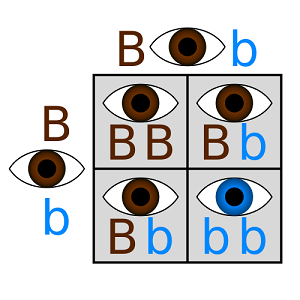This unit is focused on genetics and the transmission of traits. Beginning with using Punnett squares and pedigrees to predict possible offspring, the unit has students investigate Mendelian genetics, genetic engineering and modification, and the transmission and mutation of traits during reproduction. The unit culminates in a performance assessment that asks students to argue a topic.
Heredity & Genetics Overview
The following websites provide a helpful overview of the basic concepts and terminology used in heredity and genetics.
DNA, Chromosomes & GenesGenetics involves numerous molecular structures. DNA is considered the most important of all molecules. DNA is a double helix molecule made of repeating units called nucleotides. Chromosomes are made of DNA and regions of chromosomes that control certain traits are called genes.
Environmental FactorsAccording to the National Institute of Environmental Health Sciences, "Nearly all diseases result from a complex interaction between an individual’s genetic make-up and the environmental agents that he or she is exposed to."
Copying (replicating) DNAThis is an advanced concept. Before a cell divides, it makes an exact copy of its unique DNA. It passes the copy to the new cell during mitosis and meiosis. This process involves numerous proteins called enzymes and complex interactions between them.
|
Punnett SquaresHeredity can be predicted using models. These models incorporate the concepts of dominant & recessive alleles, heterozygous & homozygous organisms, and phenotypes & genotypes.
Historical DevelopmentThe study of heredity has it's roots in Mendel's work on plants in the 1850's. The study of DNA has it's roots in several scientists' work in the 1950's.
Human Genome ProjectOne of the greatest scientific achievements of all time. According to the National Institute of Health, "Completed in April 2003, the Human Genome Project gave us the ability, for the first time, to read nature's complete genetic blueprint for building a human being.
| ||||||||||||||||||||||
MeiosisBy now you know that a stork didn't drop you off at the hospital, meiosis did and this is how you got their genes.
Websites |
Mind = Blown |
This is a resource center for my students. I don't own any of these videos, images or ideas. I just showed up to the Internet and they followed me here.










